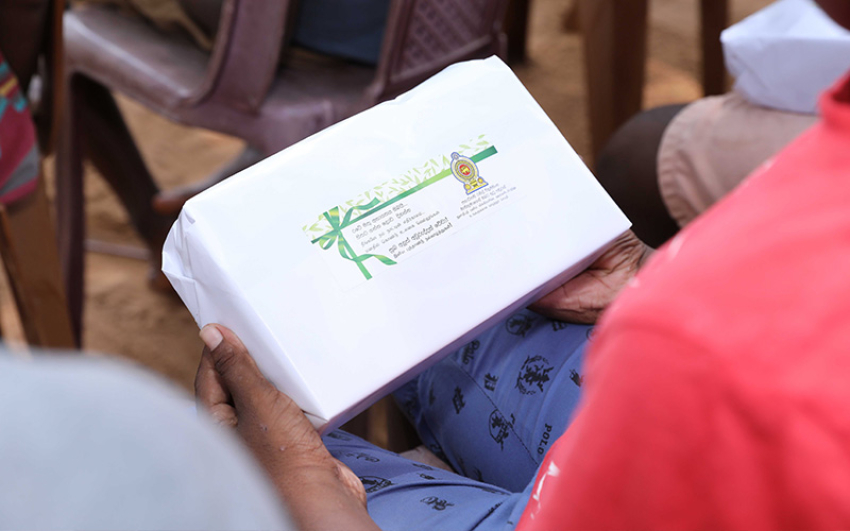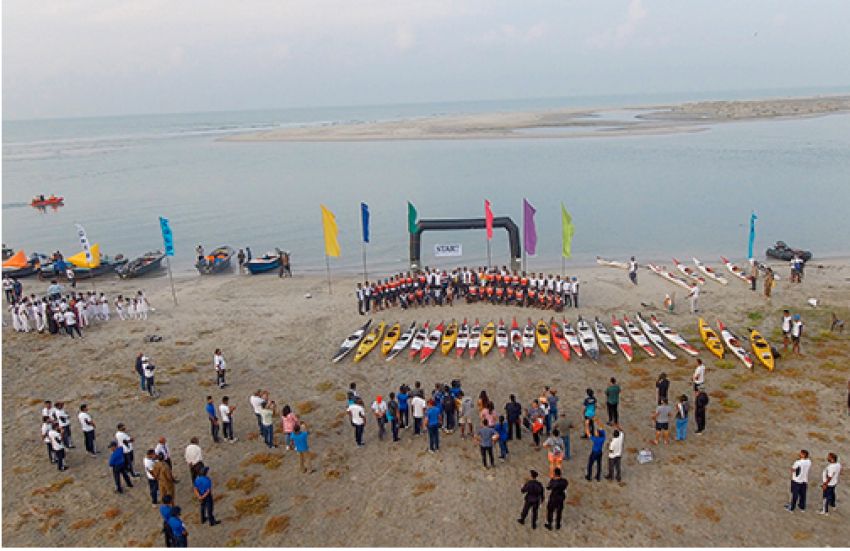It all started with a goat. The unfortunate animal was born in the Netherlands in the spring of 1939 – and his prospects did not look good. On the left side of his body, a bare patch of fur marked the spot where his front leg should have been. On the right, his front leg was so deformed, it was more of a stump with a hoof. Walking on all fours was going to be, let’s say, problematic.
But when he was three months old, the little goat was adopted by a veterinary institute and moved to a grassy field. There he quickly improvised his own peculiar style of getting around. Pushing his back feet forwards, he would draw himself up until he was standing half-upright on his hind legs, and jump. The end result was somewhere between the hop of a kangaroo and a hare, though presumably not quite as majestic.Sadly the plucky goat was involved in an accident soon after his first birthday, and he died. But there was one final surprise lurking in his skeleton.
For centuries, scientists had thought that our bones were fixed – that they grow in a predictable way, according to instructions inherited from our parents. But when a Dutch anatomist investigated the goat’s skeleton, they found that he had begun to adapt. The bones in his hips and legs were thicker than you would expect, while the ones in his ankles had been stretched out. Finally his toes and hips were abnormally angled, to accommodate a more upright posture. The goat’s frame had started to look a lot like those of animals which hop.
Today it’s an established fact that our skeletons are surprisingly malleable. The pure white remains displayed in museums may seem solid and inert, but the bones beneath our flesh are very much alive – they’re actually pink with blood vessels – and they’re constantly being broken down and rebuilt. So although each person’s skeleton develops according to a rough template set out in their DNA, it is then tailored to accommodate the unique stresses of their life.
This has led to a discipline known as “osteobiography" – literally “the biography of bones” – which involves looking at a skeleton to find out how its owner lived. It relies on the fact that certain activities, such as walking on two legs, leave a predictable signature behind, such as sturdier hip bones.
And from the discovery of a curious spiky growth on the back of many people’s skulls to the realisation that our jaws are getting smaller, to the enigmatic finding that German youths currently have narrower elbows than ever before, it’s clear that modern life is having an impact on our bones.
(Credit: Getty Images)
The House of Taga - the famously brawny chief in Tinian (Credit: Getty Images)
For an example of how osteobiography works, take the mystery of the “strong men” of Guam and the Mariana Islands. It began with the discovery of a male skeleton on the island of Tinian, which lies 1,600 miles (2,560km) east of the Philippines in the Pacific Ocean, in 1924. The remains were dated to the 16th or 17th Century, and they were positively gigantic. The man’s skull, arm bones, collarbones, and the bones of his lower legs suggested that he had been immensely strong and unusually tall.
The finding slotted in nicely with local legends of enormous ancient rulers, who had been capable of truly heroic physical feats. Archaeologists called him Taotao Tagga – “man of Tagga” – after the island’s famous mythological chief Taga, who was renowned for his super-human strength.
As other graves were discovered, it became clear that the first skeleton was no anomaly; in fact as well as fiction, Tinian and the surrounding islands had been home to a race of extraordinarily brawny men. But where had they got their strength from?
As it happens, the strong men’s remains were often found lying next to the answer. In the case of Taga, he was buried amongst 12 imposing carved stone pillars, which would originally have supported his house. Meanwhile, a closer inspection of his bones and others has revealed that they have similar features to those from the Tonga archipelago in the South Pacific, where people do a lot of stone working and building with massive rocks.
The largest such house on the island had pillars that were 16ft (5m) high and weighed nearly 13 tonnes each – about as much as two full-grown African elephants. This was no mysterious race of muscular giants; the men achieved their powerful builds by sheer hard work.
If, in the future, the same technique were used to piece together how people lived in 2019, the scientists would find characteristic changes in our skeletons that reflect our modern lifestyles.
(Credit: Alamy)
The time we spend on our smartphones appears to be changing the shape of our skulls (Credit: Alamy)
“I have been a clinician for 20 years, and only in the last decade, increasingly I have been discovering that my patients have this growth on the skull,” says David Shahar, a health scientist at the University of The Sunshine Coast, Australia.
The spike-like feature, also known as the “external occipital protuberance” is found at the lower back of the skull, just above the neck. If you have one, it’s likely that you will be able to feel it with your fingers – or if you’re bald, it may even be visible from behind.
Until recently, this type of growth was thought to be extremely rare. In 1885, when the spike was first investigated, the renowned French scientist Paul Broca complained that it even had a name at all. “He didn’t like it because he had studied so many specimens, and he hadn’t really seen any which had it.”
Feeling that something might be up, Shahar decided to investigate. Together with his colleague, he analysed over a thousand X-rays of skulls from people ranging from 18 to 86 years old. They measured any spikes and noted what each participant’s posture was like.
What the scientists found was striking. The spike was far more prevalent than they had expected, and also a lot more common in the youngest age group: one in four people aged 18-30 had the growth. Why could this be? And should we be concerned?
Shahar thinks the spike explosion is down to modern technology, particularly our recent obsession with smartphones and tablets. As we hunch over them, we crane our necks and hold our heads forward. This is problematic, because the average head weighs around 10 pounds (4.5 kg) – about as much as a large watermelon.
Text neck
When we’re sitting upright, these hefty objects are balanced neatly on top of our spines. But as we lean forwards to pore over famous dogs on social media, our necks must strain to hold them in place. Doctors call the pain this can cause “text neck”. Shahar thinks the spikes form because the hunched posture creates extra pressure on the place where the neck muscles attach to the skull – and the body responds by laying down fresh layers of bone. These help the skull to cope with the extra stress, by spreading the weight over a wider area.
Of course, bad posture was not invented in the 21st Century – people have always found something to hunch over. So why didn’t we get the skull protuberances from books? One possibility is down to the sheer amount of time that we currently spend on our phones, versus how long a person would previously have spent reading. For example, even in 1973, well before most modern hand-held distractions were invented, the average American typically read for about two hours each day. In contrast, today people are spending nearly double that time on their phones.
Indeed, for Shahar, the biggest surprise was just how large the spikes were. Before his study, the most recent research was conducted at an osteological lab in India, in 2012. That’s a lab specialising entirely in bones – as you can imagine, they have quite a lot of skulls – but the doctor there only found one with the growth. It measured 8 mm, which is so small, it wouldn’t even have been included in Shahar’s results. “And he thought it was significant enough to write a whole paper about it!” he says. In his own study, the most substantial growths were 30mm long.
Intriguingly, the strong men from the Mariana islands also tend to have growths on their skulls. They are thought to have developed for a similar reason – to support their powerful neck and shoulder muscles. The men may have carried heavy weights by suspending them from poles across their shoulders.
Shahar says it’s likely that the modern spikes will never go away. They will continue to get bigger and bigger – “Imagine if you have stalactites and stalagmites, if no one is bothering them, they will just keep growing” – but it’s rare for them to cause any trouble by themselves. If there is an issue, it will probably be caused by the other compensations that the body must make for all our hunching.
(Credit: Alamy)
Our elbows seem to be shrinking, perhaps because we take less exercise than past generations (Credit: Alamy)
On the other side of the world, in Germany, scientists have discovered another bizarre development: our elbows are shrinking. Christiane Scheffler, an anthropologist from the University of Potsdam, was studying body measurements taken from school children when she noticed the trend.
Children’s skeletons were becoming more and more fragile every year
To see exactly how much their skeletons had changed over time, Scheffler undertook a study of how robust, or “big boned”, children were between 1999 and 2009. This involved calculating their “frame index”, which is how a person’s height compares to the width of their elbows. Then she compared her results with those from an identical study that was 10 years older. She found that the children’s skeletons were becoming more and more fragile every year.
“And so we were thinking about that, what could be the reason,” says Scheffler. Her first idea was that it could be genetic, but it’s hard to see how a population’s DNA could change that much in just 10 years. The second was that perhaps the children were suffering from poor nutrition, but this isn’t really a problem in Germany. The third was that today’s youth are a generation of couch potatoes.
To find out, Scheffler conducted a new study – together with some colleagues this time – in which she also asked the children to fill out a questionnaire about their daily habits, and to wear a step counter for a week. The team found a strong link between how robust the children’s skeletons were and the amount of walking they were doing.
It’s already well known that every time we use our muscles, we help to increase the mass of the bones that support them. “If you use them again and again, they build more bone tissue, which is measured as a higher density and bigger girth of bone,” says Scheffler. The children’s shrinking skeletons look like a straightforward adaptation to modern life, since it doesn’t make sense to grow bone that you don’t need.
But there was one surprise lurking in the data: walking was the only type of exercise that seemed to have any impact. Scheffler thinks this is because even the most avid sports fans actually devote very little time to practising. “It’s not helpful if your mother takes you in the car for one or two hours per week,” she says.
And though no one has looked at whether the link holds up in adults, it’s likely that the same rules apply: it’s not enough to simply hit the gym a couple of times a week without also walking long distances. “Because our evolution tells us that we can walk for almost 30km (19 miles) per day.”
(Credit: Alamy)
The slight overbite of modern humans has shaped the way we speak - easing the production of "f" and "v" sounds (Credit: Alamy)
The final surprise hidden in our bones may have been happening for hundreds of years, but we’ve only just noticed. Back in 2011, Noreen von Cramon-Taubadel from The State University of New York at Buffalo, was studying skulls. As an anthropologist, she was keen to find out to if it was possible to tell where one was from, just by looking at its shape.
In her quest for an answer, Cramon-Taubadel had been scouring the collections of museums from all over the world for skulls to compare, and painstakingly measuring them. It was indeed the case that, on the whole, you could tell roughly where a skull was from, and who its owner was related to, just from its shape. But there was one part where this wasn’t the case: the jaw.
It soon became clear that instead of being determined by genetics, the shape of the jaw was mostly affected by whether that person had grown up in a hunter-gatherer society, or a community that relied on farming. Cramon-Taubadel thinks it’s all down to how much chewing we do as we’re growing up. “If you think about orthodontics, obviously the reason we do that with teenagers is because their bones are still growing,” says Cramon-Taubadel. “Bones are still malleable at that age and they will respond to different pressures.”
In modern, farming-based societies where the food is soft and palatable, we can wolf down a meal without needing to mash it up much first. Less chewing makes for weaker muscles, which means our jaws don’t develop as robustly. Another idea is that it’s down to breastfeeding, because the age at which mothers wean their children varies widely, and dictates when they begin chewing more solid food.
In post-industrial populations, we’re much more likely to suffer from dental problems – such as dental crowding and crooked teeth
But there’s no need to mourn your weak farmer’s jawline just yet. Cramon-Taubadel says the impact chewing can have on the lower face is actually fairly subtle to the naked eye. Instead, it’s likely to show in our teeth. “So the main problem is that especially in post-industrial populations, we’re much more likely to suffer from dental problems – dental crowding, crooked teeth, etc.,” she says. “Right now, what the research is showing is that having a slightly more biomechanically tough diet, particularly in children, might be useful for counteracting some of the imbalance between the way that our teeth grow and develop and push through.”.
And here there’s an unexpected twist. Incredibly, it now seems that the changes to our jaws and teeth have had one welcome side effect at least – on the way that we speak. A recent study found that, as societies discovered agriculture in the Neolithic period, roughly 12,000 years ago, the changes to our bites may have allowed us to pronounce new sounds, such as “f” and “v”. The researchers estimated that this transformed the languages that people spoke, from containing just 3% of these difficult sounds to 76% today.
Rather than having bites, like we do now, where the upper incisors (upper front teeth) covered the lower ones, previously adults would have had bites where they met instead. To catapult your jaw back to Neolithic times, try pushing out your lower jaw until your upper and lower teeth touch, then attempt to say “fish” or “Venice”.
So what will future archaeologists make of our skeletons, when they examine them from their spaceships? If we’re not careful, they’ll reveal unhealthy diets, staggering levels of inactivity, and a morbid attachment to technology. Perhaps it’s best to be cremated.our bones are changing in surprising ways




















